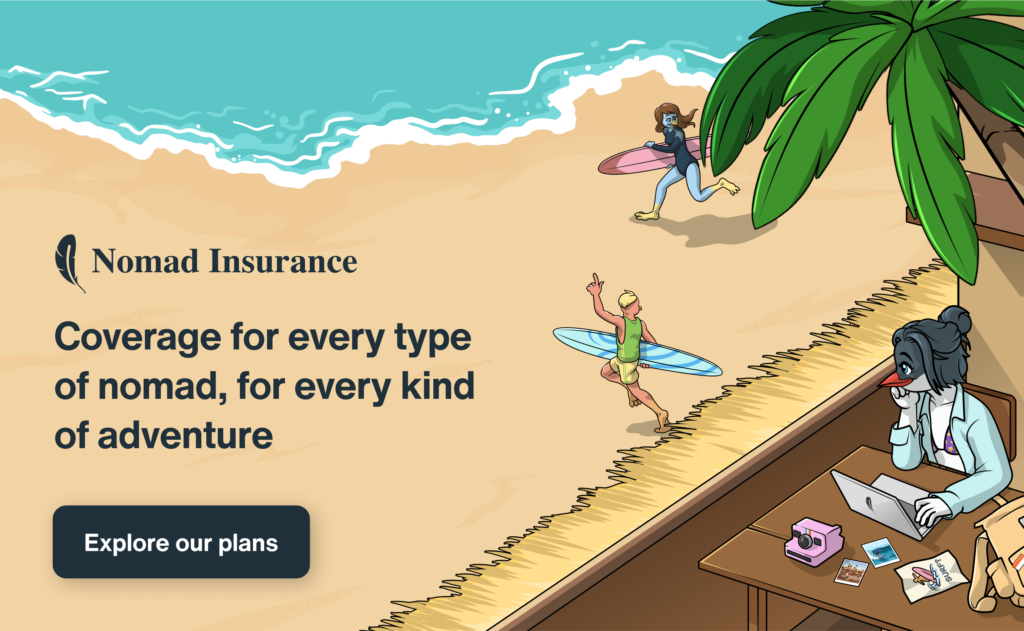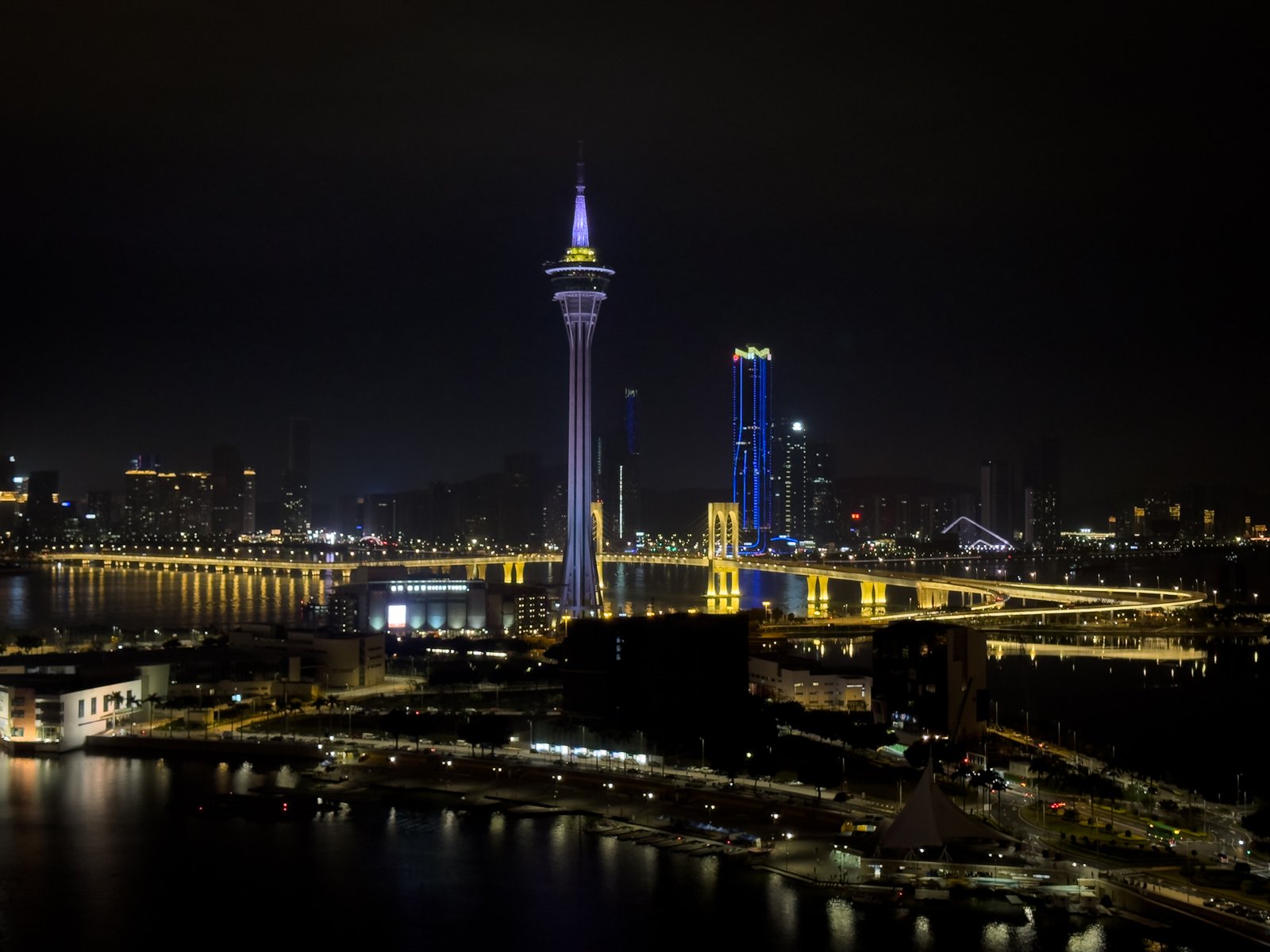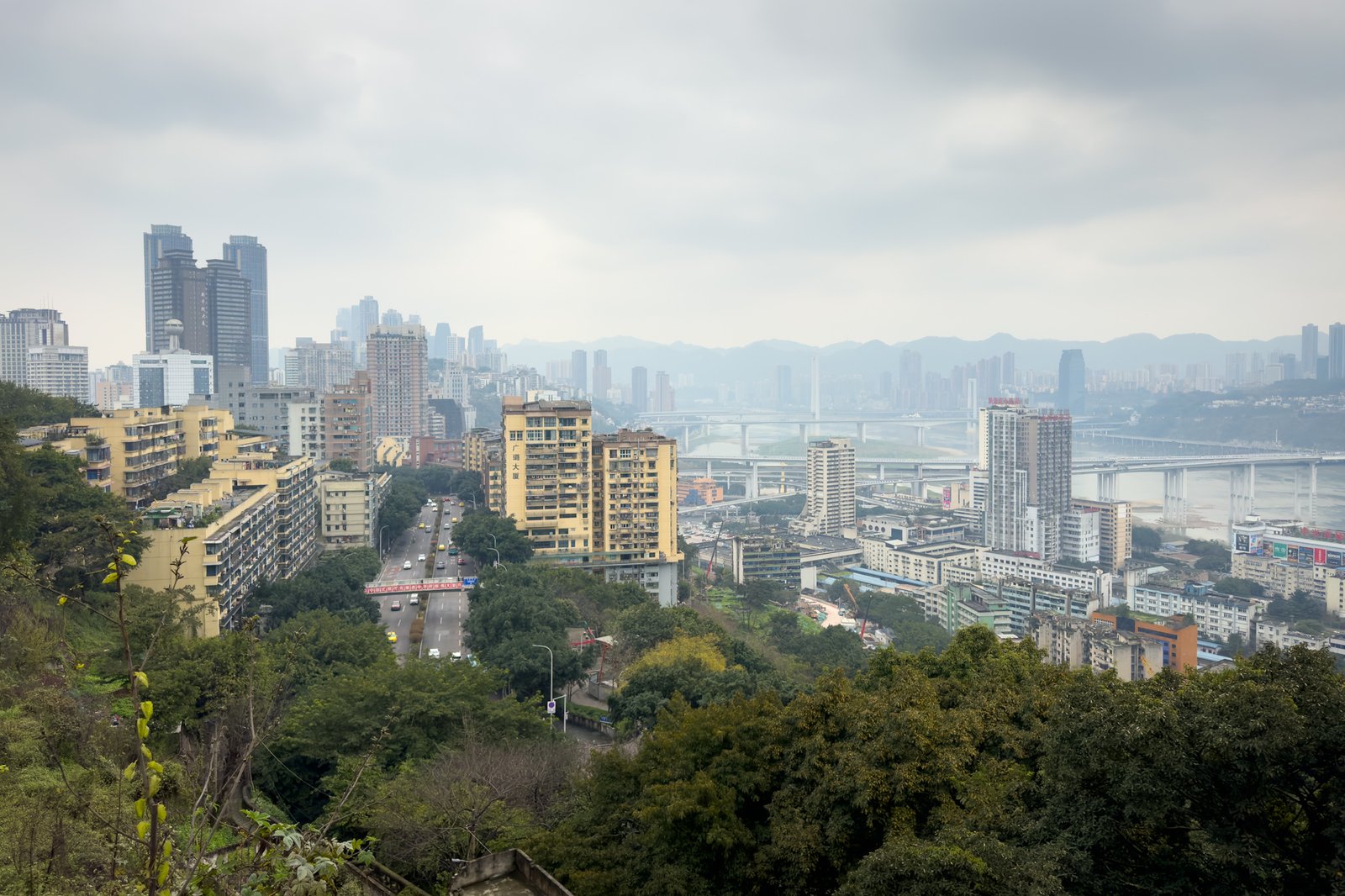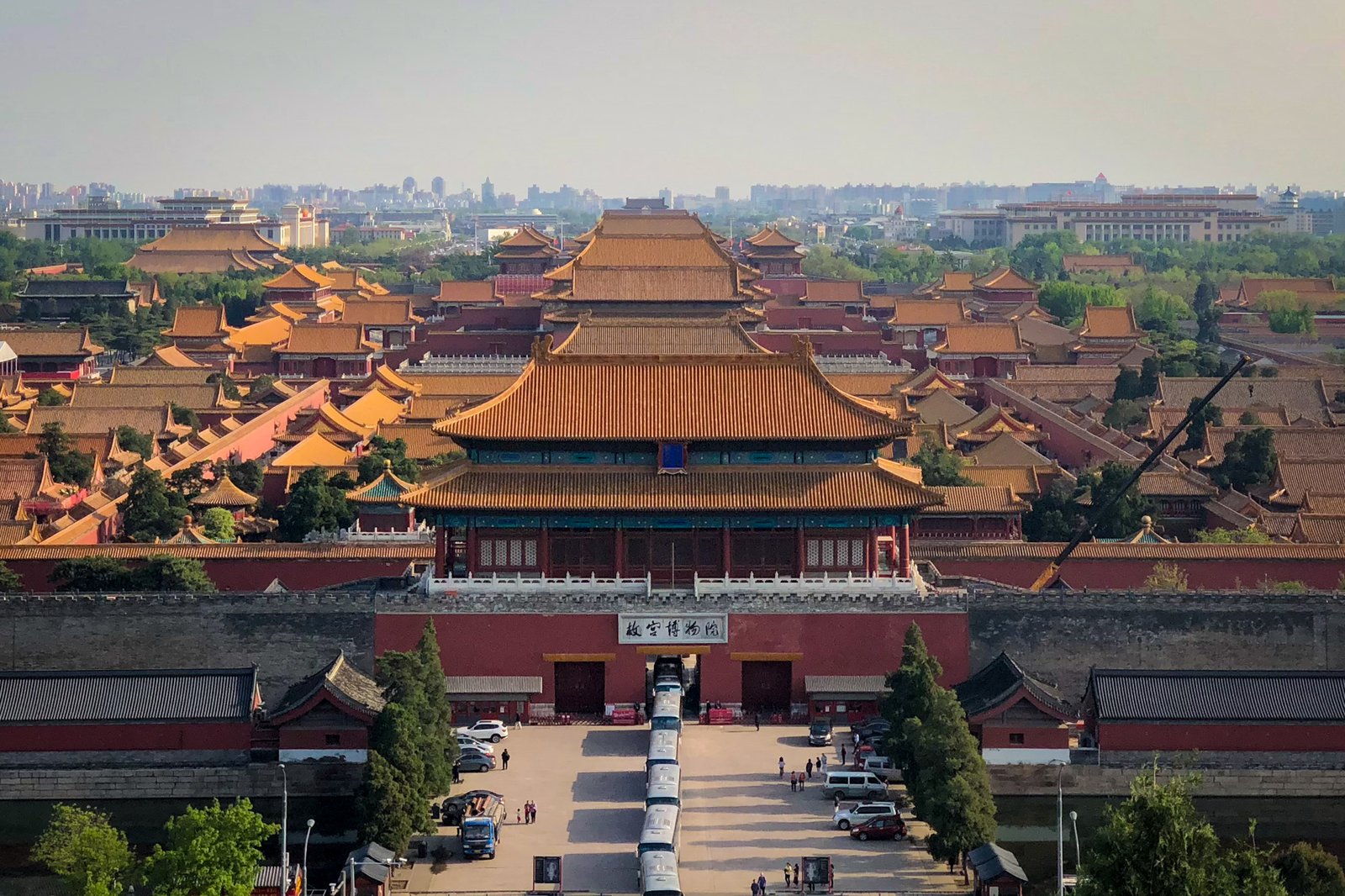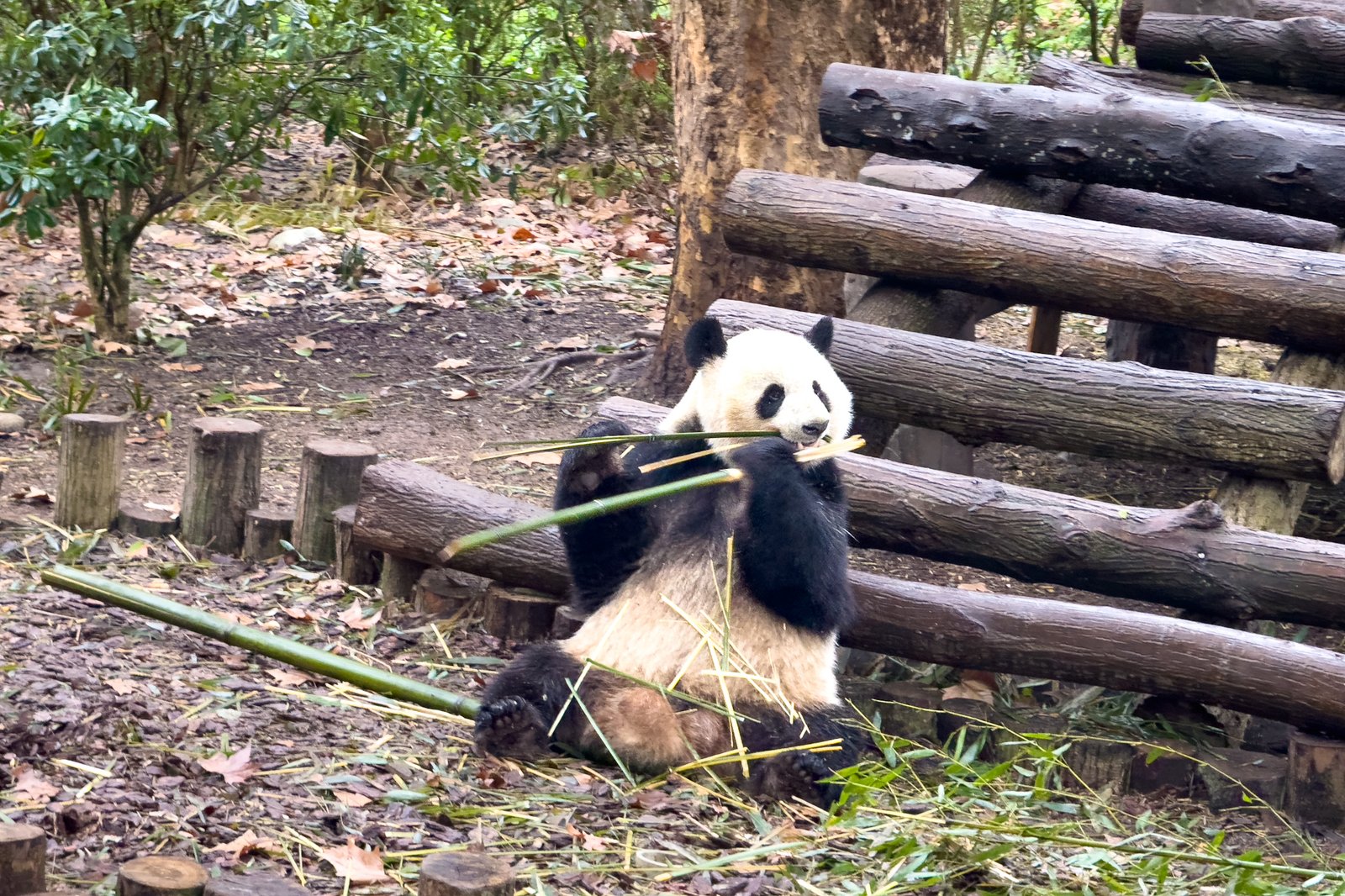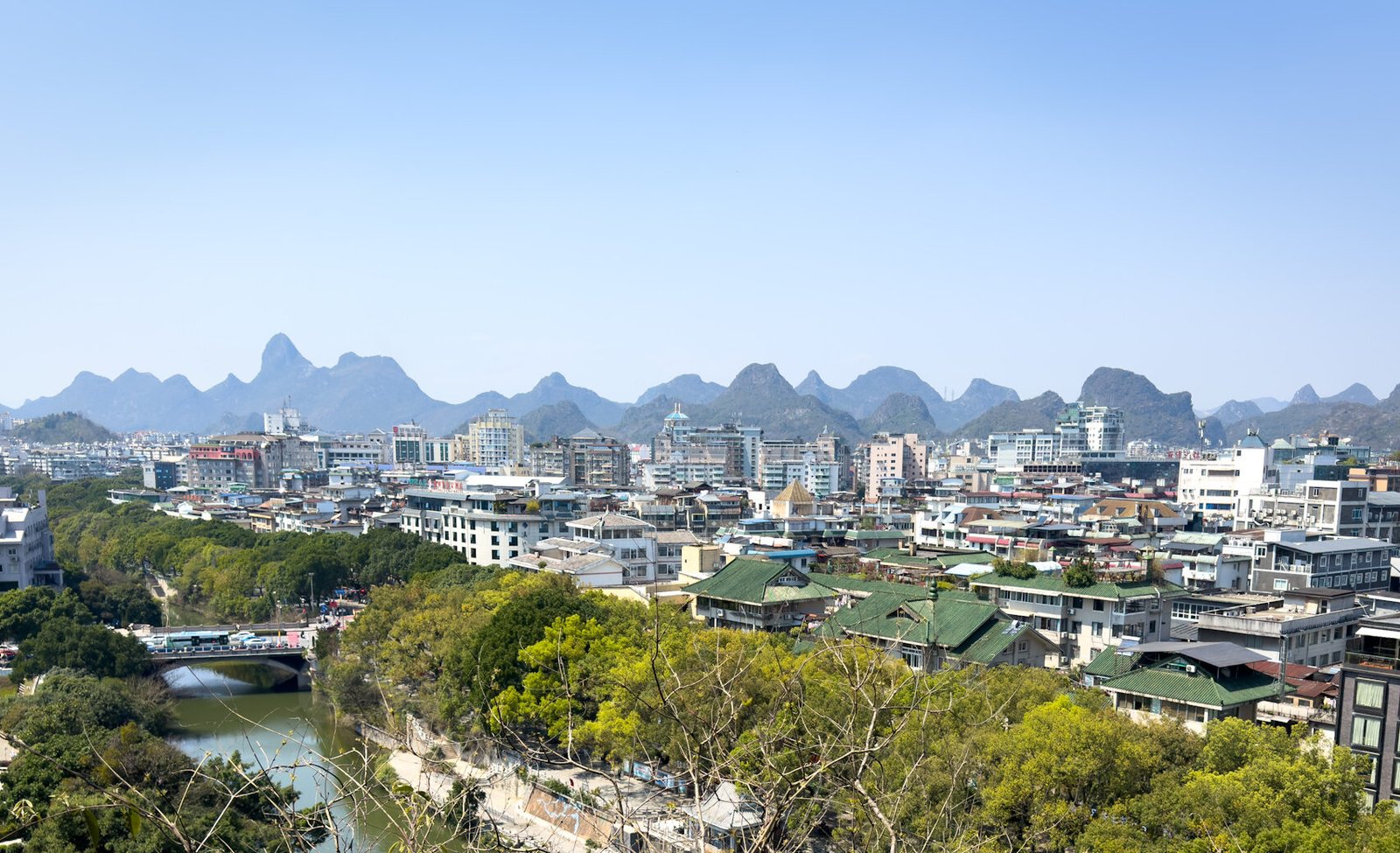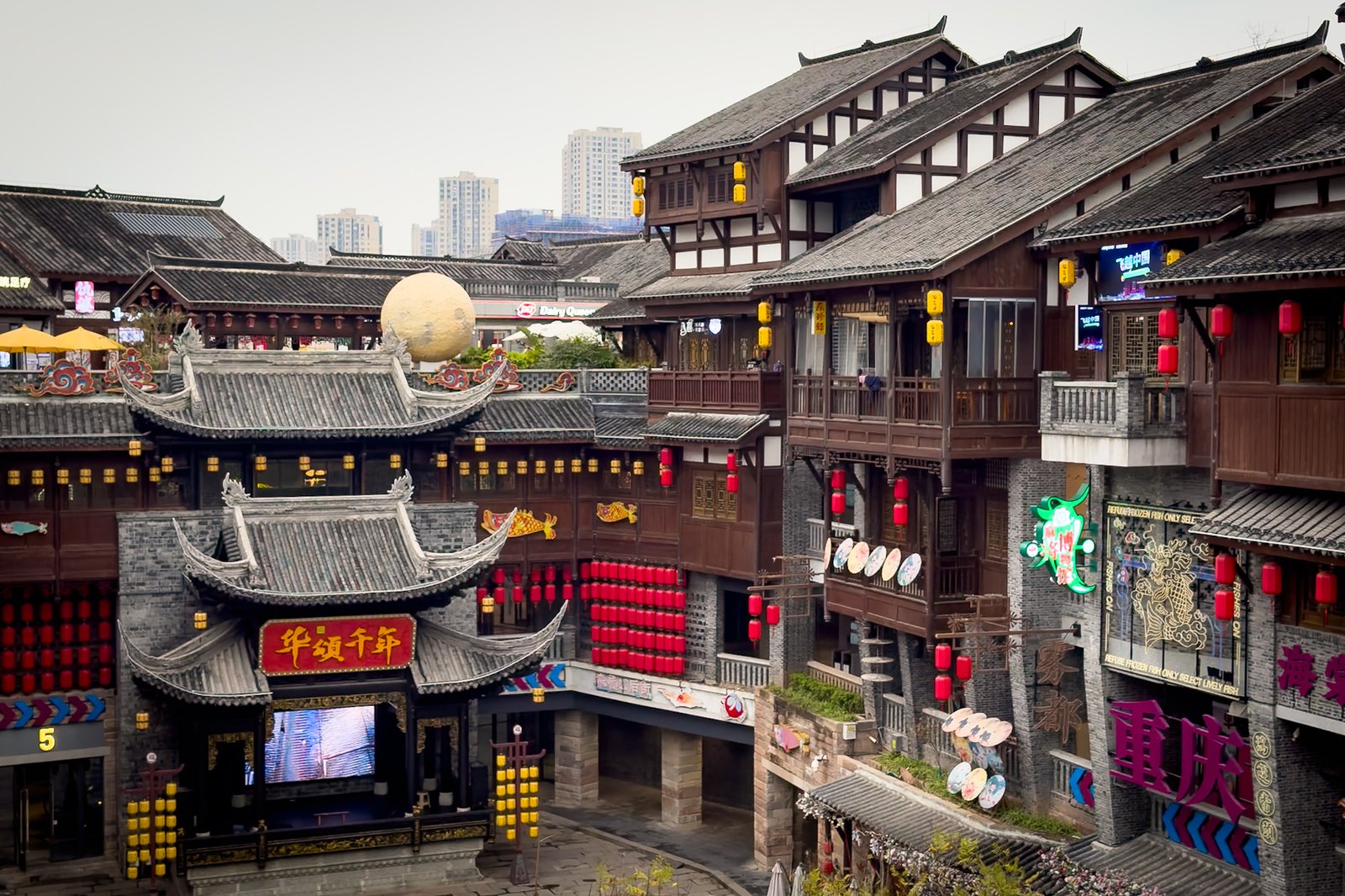Looking for what to do in Chengdu? Here is our 4-day itinerary in the panda city!
We were already on our second trip around the world when China decided to change its visa policy for Portugal and other countries. It was the perfect excuse to finally explore this incredible country! We started with Chengdu, and from here, we headed south for two weeks.
If there’s a place in the world that breathes pandas, it’s Chengdu. The city has pandas everywhere – on murals, in shops, in cafes – but the fame doesn’t just come from the Giant Panda Conservation Center. Chengdu is also the capital of Sichuan, one of the most intense culinary regions in China. Additionally, the city is known for its relaxed lifestyle, the tradition of tea houses, and fascinating performances like the Sichuan Opera.
Table of Contents
Is Chengdu Safe?
Chengdu is an extremely safe city, with a very low crime rate, especially compared to major Western cities. Violence against tourists is practically nonexistent, with the main risks being minor scams like the famous “tea scam” and price inflation in markets. Despite this, there is a strong police presence, with rigorous surveillance, and security cameras throughout the city, which helps deter crime. Women can also travel alone with peace of mind, as cases of harassment are rare and the local culture tends to be respectful.
The traffic in Chengdu can be chaotic, with cars not always stopping for pedestrians, so it’s important to be careful when crossing the streets. For those who want to use shared bikes, the experience in the middle of traffic should be approached with caution. Additionally, it is recommended to drink only bottled or boiled water, as tap water is not potable. For medical emergencies, international hospitals are the best option. Overall, with a little attention, Chengdu offers a peaceful and safe experience for travelers.
How Many Days to Spend in Chengdu?
The ideal time in Chengdu depends on your pace and what you want to visit in the city and its surroundings. For us, staying 4 nights was the perfect balance – we had three full days to explore at a leisurely pace, plus travel days, during which we didn’t do much.
If you want to include trips to more remote locations, such as Jiuzhaigou Valley or Mount Emei, it might be worth adding an extra day or two.
Where to Stay in Chengdu?



Choosing the right location makes all the difference in the experience of any city, and Chengdu is no exception. Here are some of the best areas to stay:
- Tianfu Square – Perfect for first-time visitors to Chengdu. It’s centrally located, with easy access to main attractions and transportation.
- Kuan Zhai Alley – For those who want a more authentic experience. This area has historic streets, traditional tea houses, and charming architecture.
- Hi-Tech Zone – Ideal for those who prefer a modern and tranquil environment, with cafes, shopping centers, and good restaurants.
Tip: Always confirm with your accommodation the best way to get there. Ask for the nearest metro station or request the address written in Chinese – this will make life easier, whether you’re showing it to a taxi driver or using the DiDi app (China’s “Uber”).
3-Day Itinerary in Chengdu
Main Activities You Should Book
Day 1: Arrival in the Panda City
We arrived in Chengdu late in the day. We flew into Tianfu Airport, but there’s another airport in the city, Shuangliu. The easiest way to get to the city center is definitely by metro. There’s an express metro that connects the airport directly to the South Railway Station, and from there it was just a matter of switching lines. In less than half an hour, we were already at Tianfu Square, the heart of the city.
Since we arrived late, we took care of the essentials – doing laundry and taking a short evening stroll around Tianfu Square. This area is bustling and illuminated at night, with futuristic skyscrapers and plenty of shops and restaurants.



We passed by the TianfuHong Shopping Center, where we discovered Momi Café, a super cute shop full of manga, Japanese anime, and of course, panda merchandise.
For dinner, there’s everything around – from international options to Sichuan hotpot restaurants, in case you want to start your trip with an explosion of spicy flavors.
Day 2 in Chengdu: Tradition, Culture, and Modernity
The second day in Chengdu was an immersion into local culture, with moments that made us fall even more in love with the city.
We started at People’s Park, where locals make the most of the green spaces to relax, socialize, and even dance. It was incredible to see how parks in China are true meeting points, always full of life. Inside the park, we visited the Heming Teahouse, and here, drinking tea is much more than a simple ritual – it’s a performance. From the way they serve tea with long-spouted kettles to the tranquil and immersive atmosphere, it was a unique experience that left us fascinated.
Another interesting spot in the park was the matchmaking corner, where parents leave posters introducing their single children, with details like age, profession, and even height, in the hope of finding them a partner. A huge cultural difference from what we’re used to and one of those moments that make traveling so special.


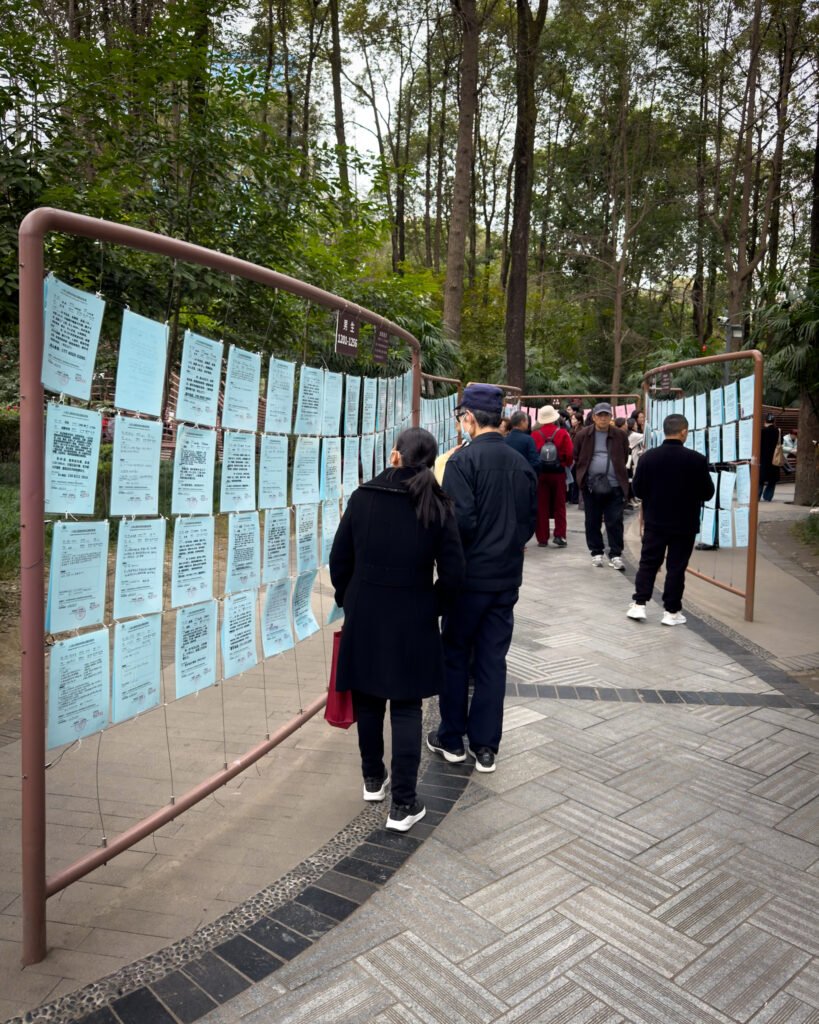
For lunch, we chose Quanjude (Tonghang Building Branch), famous for its Peking duck, and for us, it served one of the best we’ve tried in China. The crispy skin, the succulent meat, everything was simply perfect.
In the afternoon, we took a break at Light Hills Coffee, a cozy space, before heading to Kuan Alley and Zhai Alley, a set of streets where you can feel the tradition and culture of Chengdu. Between shops, tea houses, and street food, every corner had something new to discover. We stopped by Sanlian Taofen Books, a very pleasant bookstore, but with most books in Chinese.



In the late afternoon, we headed to Tsutaya Bookstore, where we found not only books but also a very cool café and an inviting atmosphere. We explored Chunxi Road, a huge commercial avenue, and visited two of the city’s largest shopping centers: Chengdu IFS, where we ended up buying a few things at Muji (which seemed cheaper here than in the rest of the world), and Taikoo Li, a plaza full of shops, but where the main attraction is the 3D screen over Volvo, which after 8 PM displays impressive 3D videos of pandas.
Before ending the night, we also stopped by Dongmen Wharf Wenchuang Market, and then walked along the river at Lan Kwai Fong, a vibrant nightlife area. We continued to Tingtaofang, Hejiang Pavilion, and ended the day at the majestic Anshun Corridor Bridge, an illuminated bridge we crossed to reach the lively Jiangtian Road, another area full of bars and restaurants.



A day full of contrasts, from tradition to modernity, and one that showed us even more fascinating facets of Chengdu!
Day 3 in Chengdu: Pandas, One of the World’s Largest Buildings, and an Amazing Barbecue
The day started with a visit to the Panda Research Base, where we spent the morning and early afternoon getting up close to these incredible animals. We went and returned by Didi – it wasn’t expensive and proved to be much more convenient than public transport.
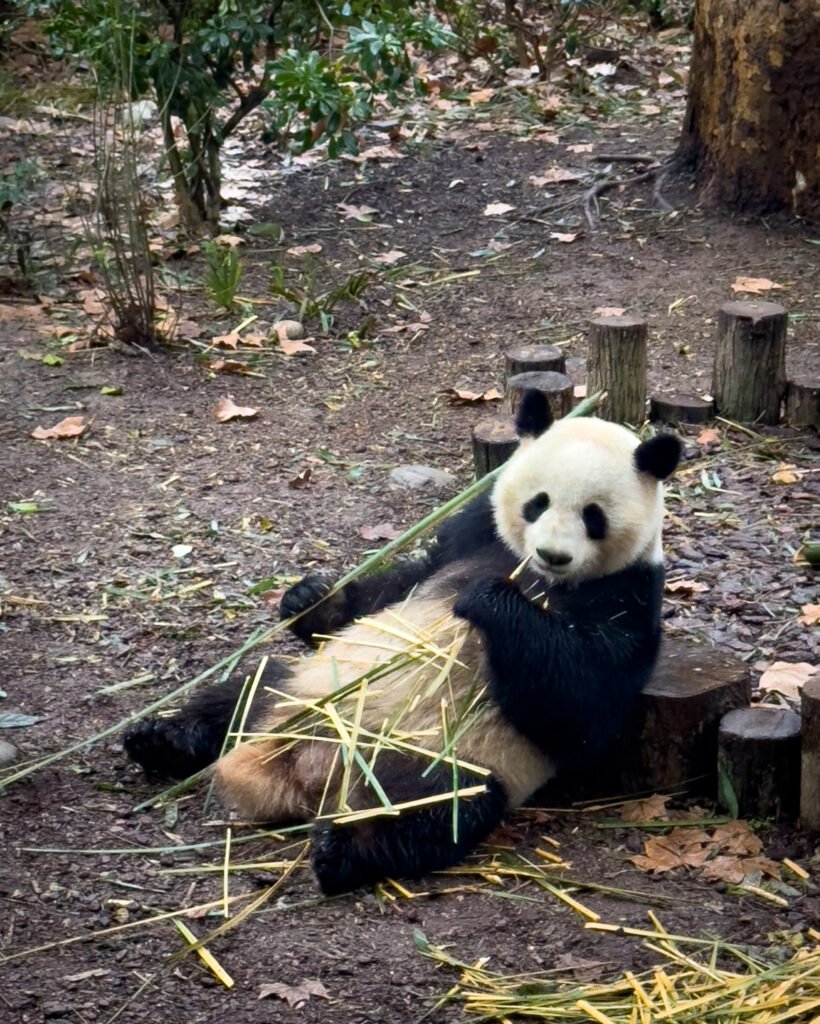
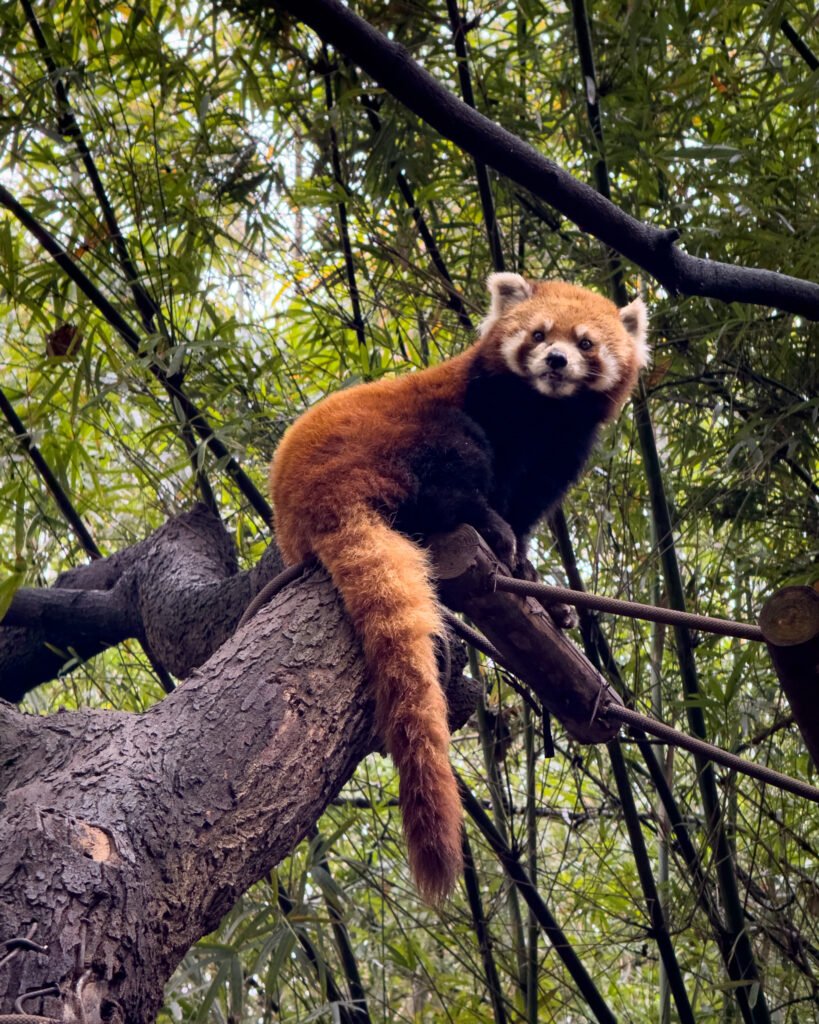
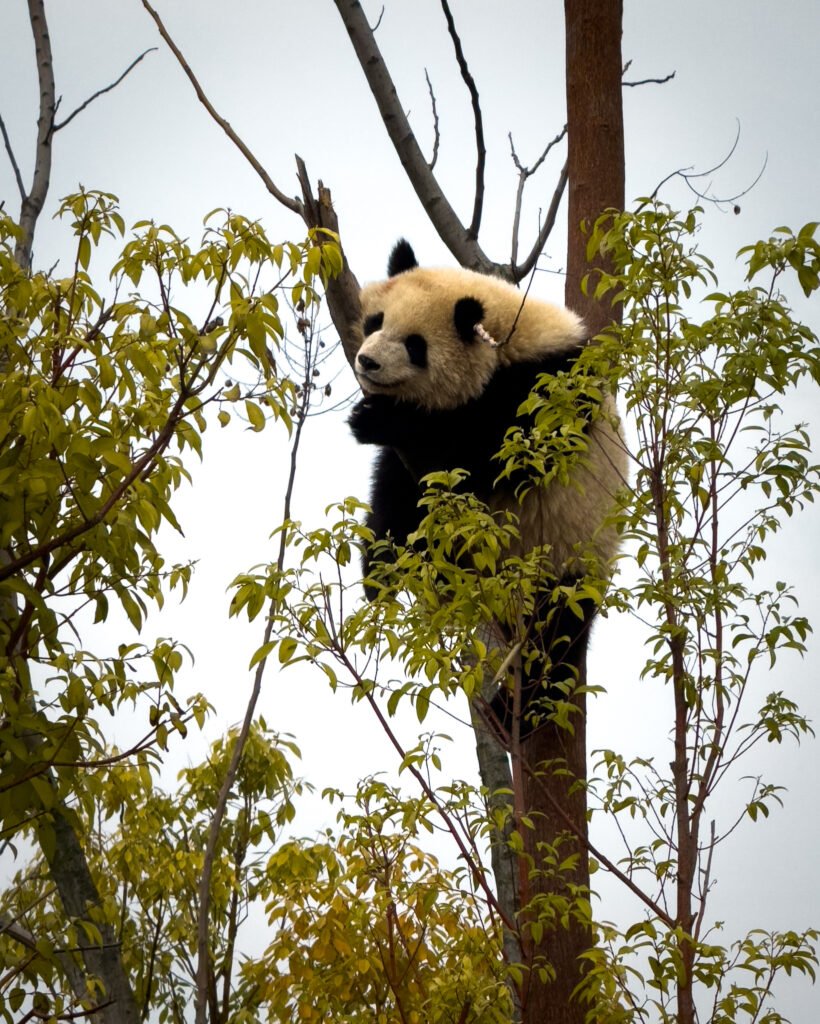
Then, we took the metro to the Global Center, one of the largest buildings in the world by floor area. Inside, you’ll find everything: shops, cinemas, a convention center, and even a water park. For dinner, there were plenty of options, but we went to Nanber – North and South Zhengzan Northeast Barbecue (4th floor). Their specialty? Tabletop barbecue – succulent meat, perfectly grilled, with an irresistible aroma. It was simply divine.



To end the day, we walked about 30 minutes from the Global Center to the Tianfu New City Convention Center, where we watched a projection show on the skyscrapers. An incredible way to wrap up the night in Chengdu.
Day 4: Chengdu Between Tradition and Spectacle
We started the day by exploring Jinli Xiaochi Street, an ancient street full of shops and restaurants where you can truly feel the local culture. Between traditional facades and irresistible aromas, it’s the perfect place to stroll leisurely and soak up the vibrant atmosphere.
Still in the same area, we explored Jingzhongmen Park, where we visited the Liu Xiang Tomb and the Wu Hou Shrine. If you love history and want to dive into Chengdu’s heritage, this stop is well worth adding to your itinerary.



Back in the city center, we stopped by Taikoo Li, one of the most modern areas in the city, and tried the burgers at BURGER AUSTINE. If you’re craving a break from Chinese cuisine without resorting to the usual options, this is an excellent choice!
In the evening, we attended the famous Sichuan Opera Face Changing show. There are several venues in the city where you can watch this performance, but we chose the Sichuan Opera House, which seemed like the best option. And it didn’t disappoint! It was a unique cultural moment, with incredible performances and the fascinating art of mask-changing in seconds – an experience not to be missed in Chengdu.



What to Do in Chengdu If You Have More Time?
If you can stay a few more days in Chengdu, there are incredible places nearby worth visiting:
- Visit the Leshan Giant Buddha – One of the most impressive Buddha statues in the world, carved into the mountain and standing over 70 meters tall. You can see it up close or take a boat ride for a panoramic view.
- Explore Mount Qingcheng – One of the birthplaces of Taoism, this mountain offers beautiful trails, historic temples, and a mystical atmosphere amidst nature. Perfect for those looking to escape the city’s hustle and bustle.
- Discover the Dujiangyan Irrigation System – A masterpiece of Chinese engineering over 2,000 years old, still used to control the waters of the Min River. Besides its historical value, the surrounding area is stunning and great for a walk.
If you have extra time in Chengdu, these are three places that deserve a spot on your itinerary!
Practical Tips for Traveling to Chengdu
Transportation in Chengdu
- Metro: The most practical and affordable way to get around. Payment is made directly through the Alipay app, linked to an international credit card (ideally one without conversion fees).
- DiDi: The equivalent of Uber in China and the best option for calling taxis or private cars without language barriers. Accepts payment via Alipay.
- Buses: Super economical but require patience and some understanding of the system, as almost everything is in Chinese.
- Shared Bikes: There are plenty from Meituan Bike and HelloBike, great for short trips. You can unlock them via Alipay.
Language and Communication
Be prepared to challenge your communication skills – English is not widely spoken. However, hotels and shops often use automatic translation apps.
Useful tips:
- Bring a translation app installed on your phone, like Google Translate.
- If you have a Holafly eSIM that doesn’t require a VPN or another option with stable internet, you can use real-time voice translation.
- Use cards with addresses in Chinese (or screenshots) to show to taxi drivers and locals.
Currency and Payments
- The local currency is the Chinese Yuan (CNY).
- Digital payments dominate everything! Almost no one uses cash, and international cards are not accepted in most establishments.
- The best option for tourists is Alipay, which allows linking international cards.
- WeChat Pay is also widely used, but the setup for foreigners can be more complicated.
Best Time to Visit Chengdu
- Spring (March-May) and autumn (September-November) are the best times.
- Avoid summer (June-August), which is extremely hot and humid.
- Winter (December-February) can be cold, but it rarely snows in the city.
Internet and Access to Blocked Apps
- Many Western apps, such as Google, WhatsApp, Facebook, and Instagram, are blocked in China.
Solutions to stay connected:
- A Holafly eSIM with unlimited internet allows access to everything without a VPN.
- If you use a local SIM card, you’ll need a reliable VPN like ExpressVPN or NordVPN to access blocked sites.
- Apple Maps works well, but Google Maps does not have updated data in China.
Travel Insurance
Medical assistance for foreigners can be expensive, and many hospitals require upfront payment. Travel insurance like Heymondo guarantees 24/7 medical assistance without bureaucracy.
Essential Apps for Chengdu
- Alipay – The most important! Essential for payments, including metro, taxis, shopping, and restaurants.
- Amap (Gaode Maps) – The best map for navigation in China. It has real-time public transport and traffic directions.
- WeChat – Used to communicate with locals, accommodations, and even as a payment method.
- DiDi – For calling taxis and private cars easily and safely.
- Trip.com – Useful for booking transportation within China. We used it to book all our train tickets.

